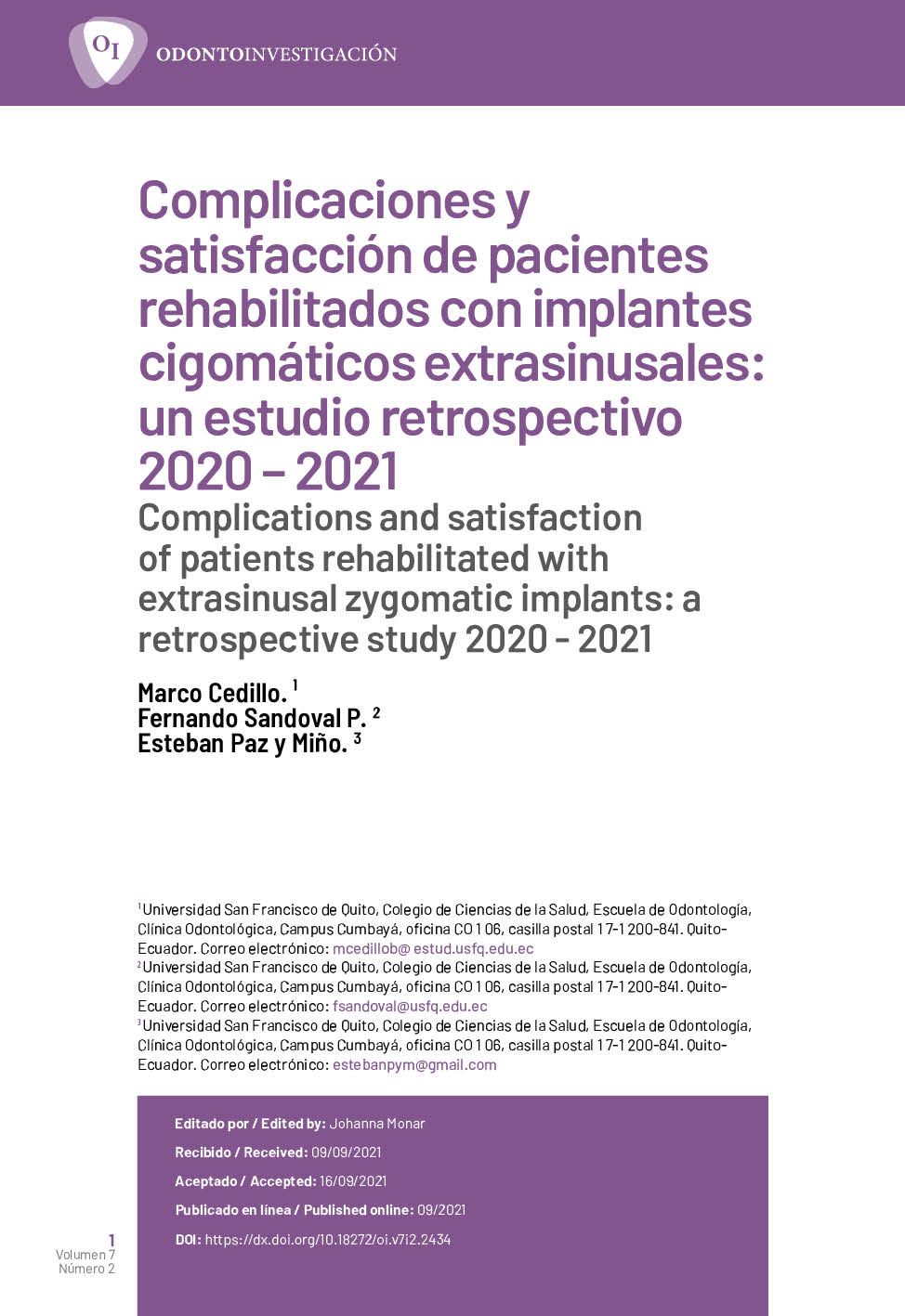Complications and satisfaction of rehabilitated patients with Zygomatic implants in a private clinic in Quito - Ecuador a retrospective study 2020-2021
Main Article Content
Abstract
The treatment of atrophic jaws using zygomatic implants was initially introduced by Branemark in 1988, since then several modifications have been presented in terms of its indications, pre-surgical planning and surgical technique. Currently being a safe and predictable long-term alternative.
The objective of the present study was to analyze the presence of biological and biomechanical problems, as well as the satisfaction of patients rehabilitated with extrasinusal zygomatic implants with immediate loading, for which we retrospectively reviewed 21 zygomatic implants installed in 6 patients with atrophic maxillae or with a maxillectomy sequela who were treated in a private clinic in the city of Quito - Ecuador.
The results of this study showed that only 9.52% of the implants presented biological complications, of which 1 implant presented oro-sinus communication (4.76%) and 2 implants presented maxillary sinusitis- (9.52% - the implant affected with the oro-sinus communication was repeated); In addition, all patients provided satisfactory responses in terms of general satisfaction with the treatment. It is concluded that the extrasinusal zygomatic implant technique is a reliable and reproducible technique that generates high rates patient satisfaction.

